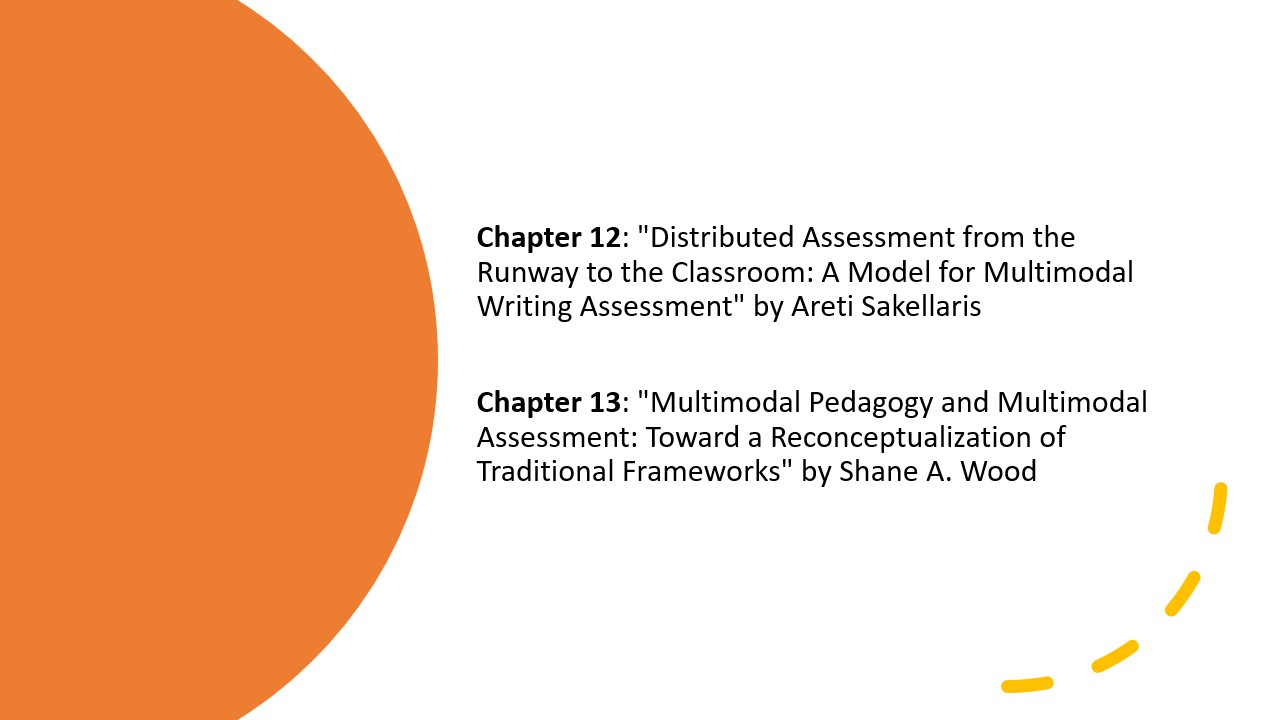Section IV: Multimodal Assessment
Section IV's contributions call for a redefinition of traditional disciplinary knowledge, perceptions, and practices. The authors do so in the context of assessment and provide suggestions and examples of what effective multimodal grading may resemble.

In Chapter 12, "Distributed Assessment from the Runway to the Classroom: A Model for Multimodal Writing Assessment," Areti Sakellaris advocated for a new model of writing assessment that centers distributed authorship and assessment. Inspired by the model of evaluation and assessment used in the fashion industry’s multimodal domain, the author encouraged writing instructors to create a "networked, distributed environment" that deprioritizes ideals of single author and assessors and elevates rhetorical reliability (p. 225). Sakellaris argued that we need to disrupt traditional, linear conceptualizations and promote the cyclical nature of production, circulation, and evaluation in the composing (and assessing) process. Through a delineation of the parallels between the design and writing process, Sakellaris illustrated how distributed, multilayered, and multifaceted evaluation and assessment (which she differentiates between) can positively affect multimodal composition.
Shane A. Wood also issued a call for a reexamination of the constraints of tradition in Chapter 13, "Multimodal Pedagogy and Multimodal Assessment: Toward a Reconceptualization of Traditional Frameworks." Wood hailed labor-based grading contracts as alternative assessment tools for multimodal composition. He asserted that this method encourages student agency, values process writing, and affords students more rhetorical and linguistic flexibility when composing texts. Wood claimed that composition studies' overreliance on alphabetic texts and the end product in the structuring and upholding of traditional frameworks produces a disconnect between pedagogy and assessment when attempting to integrate multimodal curriculum. Thus, he advocated for the use of grading contracts in the multimodal classroom to push back on the hegemonic and oppressive conventional assessment customs of our discipline.